 January 7, 2021 John E. Ross, KD8IDJ, Editor
| ||||||
FCC Reduces Proposed Amateur Radio Application Fee to $35 The FCC has agreed with ARRL and other commenters that its proposed $50 fee for certain amateur radio applications was "too high to account for the minimal staff involvement in these applications." In a Report and Order (R&O), released on December 29, the FCC scaled back to $35 the fee for a new license application, a special temporary authority (STA) request, a rule waiver request, a license renewal application, and a vanity call sign application. All fees are per ARRL had filed comments opposing the FCC's $50 fee and application fees and urged its members to follow suit. As the FCC noted in its R&O, although some commenters supported the proposed $50 fee as reasonable and fair, "ARRL and many individual commenters argued that there was no cost-based justification for application fees in the Amateur Radio Service." The fee proposal was contained in a Notice of Proposed Rulemaking (NPRM) in MD Docket 20-270, which was adopted to implement portions of the "Repack Airwaves Yielding Better Access for Users of Modern Services Act" of 2018 -- the so-called "Ray Baum's Act." "After reviewing the record, including the extensive comments filed by amateur radio licensees and based on our revised analysis of the cost of processing mostly automated processes discussed in our methodology section, we adopt a $35 application fee, a lower application fee than the Commission proposed in the NPRM for personal licenses, in recognition of the fact that the application process is mostly automated," the FCC said in the R&O. "We adopt the proposal from the NPRM to assess no additional application fee for minor modifications or administrative updates, which also are highly automated." The FCC turned away the arguments of some commenters that the FCC should exempt amateur radio licensees. The FCC stated that it had no authority to create an exemption "where none presently exists." The FCC also disagreed with those who argued that amateur radio licensees should be exempt from fees because of their public service contribution during emergencies and disasters. "[W]e are very much aware of these laudable and important services amateur radio licensees provide to the American public," the FCC said, but noted that specific exemptions provided under Section 8 of the so-called "Ray Baum's Act" requiring the FCC to assess the fees do not apply to amateur radio personal licenses. "Emergency communications, for example, are voluntary and are not required by our rules," the FCC noted. "[W]hile the value of the amateur service to the public as a voluntary noncommercial communications service, particularly with respect to providing emergency communications, is one of the underlying principles of the amateur service, the amateur service is not an emergency radio service.'" The Act requires that the FCC switch from a Congressionally mandated fee structure to a cost-based system of assessment. The FCC proposed application fees for a broad range of services that use the FCC's Universal Licensing System (ULS), including the Amateur Radio Service, which had been excluded previously. The 2018 statute excludes the Amateur Service from annual regulatory fees, but not from application fees. The effective date of the fee schedule has not been established. Read more. FCC to Require Email Address with Applications and on File Effective on June 29, 2021, amateur radio licensees and candidates must provide the FCC with an email address on all applications. If no email address is included, the FCC may dismiss the application as "defective." On September 16, the FCC adopted a Report and Order (R&O) in WT Docket 19-212 on "Completing the Transition to Electronic Filing, Licenses and Authorizations, and Correspondence in the Wireless Radio Services," which appeared on December 29 in the Federal Register. The FCC has already begun strongly encouraging While many, if not most, amateurs already have provided an email to the FCC, this also will become a requirement. Under Section 97.21 of the new rules, as amended, the holder of a valid amateur radio station license "must apply to the FCC for a modification of the license grant as necessary to show the correct mailing and email address, licensee name, club name, license trustee name, or license custodian name." For a club or military recreation station license, the application must be presented in document form to a club station call sign administrator who must submit the information to the FCC in an electronic batch file. Under new Section 97.23, as amended, each license must show the grantee's correct name, mailing address, and email address. "The email address must be an address where the grantee can receive electronic correspondence," the revised rule will state. "Revocation of the station license or suspension of the operator license may result when correspondence from the FCC is returned as undeliverable because the grantee failed to provide the correct email address." Licensees can log into the ULS License Manager System with their FRN and password to update their FCC license record, including adding an email address. For questions or password issues, call the CORES/FRN Help Line, (877) 480-3201 (Monday - Friday, 1300 - 2300 UTC) or reset the password on the FCC website. Read more. QSO Today Virtual Ham Expo Returning in March The QSO Today Virtual Ham Expo will return March 13 - 14 for a full 48 hours, QSO Today host Eric Guth, 4Z1UG/WA6IGR, announced this week. ARRL is a QSO Today Expo Partner. Guth said the inaugural QSO Today Expo last August attracted more than 16,000 The upcoming QSO Today Virtual Ham Expo will feature new speakers and presenters, panel discussions, and kit-building workshops among other activities. Guth pointed out that attendees can log in from anywhere. While he anticipates a good turnout by those who typically attend such ham radio events, the virtual Expo also offers an opportunity for those concerned about pandemic travel restrictions as well as for those who don't typically attend in-person events. "At our last Expo, we found that 60% of attendees don't go to in-person national conferences, and 40% don't attend state or local events," Guth said, noting that distance and the high cost of travel and lodging were the most oft-cited reasons. Registration is required, and to help cover the costs of staging this event, there will be a charge to attend. Advance tickets are $10 ($12.50 at the "door") and include entry for the live, 2-day show as well to the 30-day on-demand period. At the Expo, visitors can:
Those planning to attend the Expo may take advantage of new speaker calendar technology to create their own calendar of Registrants may return over the 30 days following the live event to catch speakers and presentations missed during the live period, as well as to explore and re-engage exhibitor offerings. "The QSO Today Virtual Ham Expo has all of the familiar hallmarks of an in-person hamfest, including opportunities to connect and learn," ARRL Product Development Manager Bob Inderbitzen, NQ1R, said. Read more. ARRL Podcasts Schedule
The latest edition of Eclectic Tech (Episode 24) discusses solid-state hard drive failures and features a The On the Air and Eclectic Tech podcasts are sponsored by Icom. Both podcasts are available on iTunes (iOS) and Stitcher (Android) as well as on Blubrry -- On the Air | Eclectic Tech. ARRL ARES Volunteers Were Ready to Assist in Wake of Nashville Blast ARRL Amateur Radio Emergency Service (ARES®) volunteers went on alert, ready to deploy in Williamson County, Tennessee, in the aftermath of an apparently intentional explosion early on Christmas Day in front of an AT&T switching facility in downtown Nashville. The blast injured several people and killed the individual believed responsible for the blast. It also damaged buildings, broke water mains, and disrupted telecommunications. ARRL Vice Director and Williamson County Emergency Coordinator Ed Hudgens, WB4RHQ, who lives in Nashville, monitored the situation. "The explosion did a lot more damage than was originally thought," Hudgens said in the immediate aftermath. "Since about The Middle Tennessee Emergency Amateur Repeater System (MTEARS) held nets on its DMR repeater system several times a day. The main repeater at the Tennessee Emergency Management Agency (TEMA) site was affected by the outage. Hudgens said it was fortunate that two DMR repeaters had gone online recently in Williamson County, and all communications went going through them. WCARES held a continuous net on its five-repeater linked system to assist hams as needed. The net also relayed news updates from AT&T and county governments and assisted callers on AT&T to implement wireless calling on their phones. In addition to the WCARES net, a net activated in Davidson County in Middle Tennessee. "A big thanks to those monitoring and providing updates!" Don Williams said in a post to the MTEARS Facebook page. "I was able to turn on my HT, locate a good frequency, and get up-to-date information. This was a great help in keeping my house calm with updated info as to the AT&T outage, as both our cell and internet were affected..." ARRL Headquarters reached out to Tennessee Section Manager David Thomas, KM4NYI, to offer assistance. Christmas Eve Forecast Calls ARES/RACES/SKYWARN into Action ARRL Amateur Radio Emergency Service (ARES®), RACES, and SKYWARN volunteers in Upstate New York were called upon on the morning of December 24 to provide current snowpack amounts, future rainfall amounts, and river and stream gauge levels to the National Weather Service (NWS). "Our ARES groups got a request from two local county emergency managers in the Catskill District of New York -- Chenango and Otsego counties," said Otsego County Emergency Coordinator Cory Telarico, Between the two county ARES groups, which included members of the Chenango Valley Amateur Radio Association out of Norwich and the Oneonta Amateur Radio Club in Otsego County, the volunteers were able to run nets on December 24 at 10 AM with 10 check-ins and at 7 PM with 9 check-ins, as well as a Christmas morning net at 7 AM with 8 check-ins. "I observed the Susquehanna River rise in the City of Oneonta between 4.5 and 5.5 feet in a matter of about 6 hours while on duty as a New York State Park Police Officer, Telarico said. "All of our reports were forwarded to the National Weather Service as well as the two county emergency managers." Telarico said the event demonstrated "the true dedication of our members in the field in taking time away from their families during the holiday for the goal of public service." The groups received a complimentary email from Otsego County Emergency Services Coordinator Arthur Klingler, Jr. "Your team's dedication is greatly appreciated," he said. ARRL Learning Network Webinars Visit the ARRL Learning Network (a members-only benefit) to register, check on upcoming webinars, and to view previously recorded sessions. The schedule is subject to change. Amateur Radio Logging: Anthony Luscre, K8ZT
Thursday, January 14, 2021, 12:30 PM PST / 3:30 PM EST (2030 UTC) Emergency Communications: Why Train? -- North Texas Section Emergency Coordinator Greg Evans, K5GTX Why should we train? Utilizing amateur radio operators in an emergency communication situation is a key function that can save lives. We must be able to respond to the needs of our served agencies quickly and responsibly. Topics covered include the Incident Command System and its relevance; building on consistent training; interoperability with multiple communication providers; interoperability with VOAD and partners, and Mission One: Get the information delivered. Thursday, January 21, 2021, 12:30 PM PST / 3:30 PM EST (2030 UTC) Easy Helical Copper Tape and PVC 2-Meter Vertical Antenna -- John Portune, W6NBC Here's how to quickly build from hardware-store copper tape and PVC pipe an 18-inch, continuously loaded, light weight portable or base station 2-meter omnidirectional vertical with performance and efficiency comparable to a 5-foot J-pole. The cost is roughly $10. It's an easy afternoon project, ideal for the new ham but equal to the serious ham's needs. It is great for events like bike-a-thons. It also makes an excellent ham radio club hands-on building project, and the design is adaptable to other bands. Tuesday, February 2, 2021, 10 AM PST / 1 PM EST (1800 UTC) Announcements
Amateur Radio in the News ARRL Public Information Officers, Coordinators, and many other member-volunteers help keep amateur radio and ARRL in the news. Share any amateur radio media hits you spot with ARRL.
The K7RA Solar Update Tad Cook, K7RA, Seattle, reports: Sunspots disappeared after January 2, so the average daily sunspot number dropped from 27.1 last week to 10 for the December 31 - January 6 reporting week. Of course, average daily solar flux declined as well, from 86.4 to 78.6. Geomagnetic indicators remain quiet, with planetary A index changing Predicted solar flux for the next 30 days looks depressed -- far different from the high 80s we saw around Christmas. Solar flux is expected at 74 on January 7 - 13; 76 on January 14; 80 on January 15 - 16; 82 on January 17 - 27; 80 on January 28 - 31, and 78 on February 1 - 5. Flux values rise to 82 around mid - February. Planetary A index is predicted at 8 on January 7; 5 on January 8 - 9; 8 on January 10 - 11; 5 on January 12 - 16; 10 on January 17 - 20; 5 on January 21 - 24; 8 on January 25 - 26; 5 on January 27 - 31; 10, 10, and 8 on February 1 - 3, and 5 on February 4 - 5. A index rises back to 10 on February 13 - 16. Sunspot numbers for December 31 - January 6 were 25, 23, 22, 0, 0, 0, and 0, with a mean of 10. The 10.7-centimeter flux was 81.2, 80.4, 81.5, 80.4, 77.6, 75.1, and 74.1, with a mean of 78.6. Estimated planetary A indices were 3, 4, 2, 2, 3, 11, and 11, with a mean of 5.1. Middle latitude A index was 2, 3, 1, 1, 3, 9, and 9, with a mean of 4. A comprehensive K7RA Solar Update is posted Fridays on the ARRL website. For more information concerning radio propagation, visit the ARRL Technical Information Service, read "What the Numbers Mean...," and check out K9LA's Propagation Page. A propagation bulletin archive is available. For customizable propagation charts, visit the VOACAP Online for Ham Radio website. Share your reports and observations. ARRL Member Designs New Ham Radio License Plate for Kentucky A ham radio license plate designed by ARRL member Matt Makaveli, KY4GPD, of Georgetown, Kentucky, has received the approval of the Kentucky Transportation Cabinet (KYTC). His design was one of four options, which included retaining the current license plate design. The ham radio community in the Bluegrass State picked Makaveli's design with a 41% plurality.
The lengthy approval process involved some footwork on the part of the ARRL Field Organization in Kentucky. After the polling ended, ARRL Kentucky Section State Government Liaison Jack Hedges, KY4TPR, met with the KYTC for final approval on Makaveli's design. "If there's ever an example of what the ARRL organization can do for the ham radio community, this would be it," Hedges told the newspaper. The new license plate will not available until the current stock of plates is depleted, which is anticipated to be next summer. ARRL Kentucky Section Manager Steve Morgan, W4NHO, told the newspaper that a ham radio license plate is important to build awareness of amateur radio. "The amateur radio license plate is sort of like a billboard saying you're from Kentucky and you're a ham radio operator," Morgan said. Makaveli agreed, saying he thought the current design had become stale and did not stand out. A ham for 6 years, Makaveli is a certified SKYWARN storm spotter and an assistant Emergency Coordinator for Scott County, Kentucky. "I heard some people already said they like the new design and are going to switch when it comes out," Makaveli told the newspaper. In Brief...
Just Ahead in Radiosport
Upcoming ARRL Section, State, and Division Conventions Many conventions and hamfests have been canceled or postponed due to the coronavirus pandemic. Check the calendar of canceled events on the ARRL website.
Find conventions and hamfests in your area.
ARRL -- Your One-Stop Resource for . .
Subscribe to...
Free of charge to ARRL members...
| ||||||
.png) application. Administrative updates, such as a change of mailing or email address, are exempt.
application. Administrative updates, such as a change of mailing or email address, are exempt.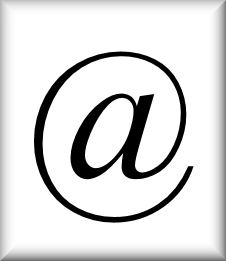 applicants to provide an email address and will email a link to an official electronic copy of the license once it's granted.
applicants to provide an email address and will email a link to an official electronic copy of the license once it's granted..jpg) attendees, and he anticipates that the March 2021 event will be even more successful.
attendees, and he anticipates that the March 2021 event will be even more successful.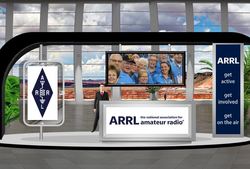 presentations in their time zones, which can be saved to a Google or Outlook calendar.
presentations in their time zones, which can be saved to a Google or Outlook calendar.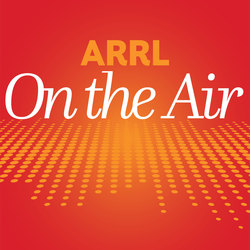 The latest episode of the On the Air podcast (Episode 12) features a discussion about storm spotting and SKYWARN, with Mike Corey, KI1U.
The latest episode of the On the Air podcast (Episode 12) features a discussion about storm spotting and SKYWARN, with Mike Corey, KI1U..jpg) chat with Scott Tilley, VE7TIL, about receiving signals from the Mars Reconnaissance Orbiter.
chat with Scott Tilley, VE7TIL, about receiving signals from the Mars Reconnaissance Orbiter..jpg) 0730 yesterday, we have had monitoring nets up and running on the local analog repeaters and DMR repeaters. We have mainly been answering questions as best we can." Hudgens said his ARES group was among those that stood ready to deploy to the Williamson County PSC to assist with communications for various county offices.
0730 yesterday, we have had monitoring nets up and running on the local analog repeaters and DMR repeaters. We have mainly been answering questions as best we can." Hudgens said his ARES group was among those that stood ready to deploy to the Williamson County PSC to assist with communications for various county offices..jpg) KD2HXE. "The reason for concern and activation was the December 16 - 17 snowstorm that dumped between 17 and 41 inches of snow on the area, compounded with forecast rain for Christmas Eve into Christmas Day and the potential for serious localized flooding."
KD2HXE. "The reason for concern and activation was the December 16 - 17 snowstorm that dumped between 17 and 41 inches of snow on the area, compounded with forecast rain for Christmas Eve into Christmas Day and the potential for serious localized flooding."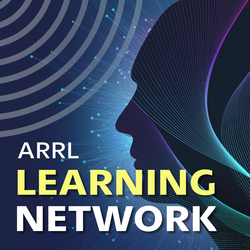 Discover the advantages of keeping an electronic amateur radio log. Find out why you may need more than one software program for logging-contesting, digital modes, special events, etc. Learn about using one full-featured logging program to pull everything together, interface with outside databases, handle electronic QSLing, and more. The discussion will include file formats, importing and exporting data between programs, submitting contest logs online, and safe backup of data.
Discover the advantages of keeping an electronic amateur radio log. Find out why you may need more than one software program for logging-contesting, digital modes, special events, etc. Learn about using one full-featured logging program to pull everything together, interface with outside databases, handle electronic QSLing, and more. The discussion will include file formats, importing and exporting data between programs, submitting contest logs online, and safe backup of data. Contesting!" editor for NCJ
Contesting!" editor for NCJ from 6.9 to 5.1, and middle latitude numbers from 5 to 4.
from 6.9 to 5.1, and middle latitude numbers from 5 to 4.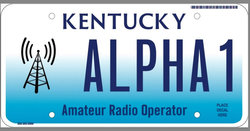 "It just hasn't sunk in," Makaveli
"It just hasn't sunk in," Makaveli 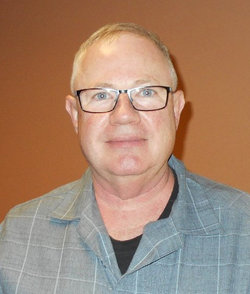 Tom Sly, WB8LCD, was named as Ohio Section Manager, effective on January 1. He assumed the seat that Scott Yonally, N8SY, vacated when he became Great Lakes Division Vice Director, after serving as Ohio's SM since 2014. Sly was appointed by ARRL Radiosport and Field Services Manager Bart Jahnke, W9JJ, after consulting with Great Lakes Division Director Dale Williams, WA8EFK, to serve the remainder of Yonally's term, which extends through September 30, 2022. A radio amateur since 1968, Sly is an ARRL Life Member and has served as Ohio Section Affiliated Club Coordinator since 2017.
Tom Sly, WB8LCD, was named as Ohio Section Manager, effective on January 1. He assumed the seat that Scott Yonally, N8SY, vacated when he became Great Lakes Division Vice Director, after serving as Ohio's SM since 2014. Sly was appointed by ARRL Radiosport and Field Services Manager Bart Jahnke, W9JJ, after consulting with Great Lakes Division Director Dale Williams, WA8EFK, to serve the remainder of Yonally's term, which extends through September 30, 2022. A radio amateur since 1968, Sly is an ARRL Life Member and has served as Ohio Section Affiliated Club Coordinator since 2017.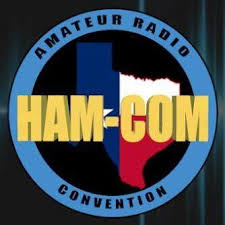 After 41 years,
After 41 years, 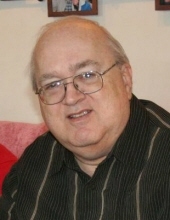 NA Contest Logging Software Developer Dave Pruett, K8CC, died on December 29. An ARRL member, he was 66. After obtaining the source code for the CT contest logger, Pruett wrote new code, and "his NA software breathed new life into the program," expanding it to accommodate multiple contests, said contester Jim Cain, K1TN. He was a log checker for the ARRL 10-Meter and 160-Meter Contests, chaired the Michigan QSO Party, and was a longtime member of the Mad River Radio Club. He served as editor of National Contest Journal (NCJ) for several years when contester Randy Thompson, K5ZD, was the publisher and later, after ARRL assumed publication of the magazine. "He was a guy who got things done," Thompson said in a post to the CQ-contest reflector. Pruett was a participant in the 1996 World Radiosport Team Championship (WRTC) with Stan Stockton, K5GO, who called him "an inspiration."
NA Contest Logging Software Developer Dave Pruett, K8CC, died on December 29. An ARRL member, he was 66. After obtaining the source code for the CT contest logger, Pruett wrote new code, and "his NA software breathed new life into the program," expanding it to accommodate multiple contests, said contester Jim Cain, K1TN. He was a log checker for the ARRL 10-Meter and 160-Meter Contests, chaired the Michigan QSO Party, and was a longtime member of the Mad River Radio Club. He served as editor of National Contest Journal (NCJ) for several years when contester Randy Thompson, K5ZD, was the publisher and later, after ARRL assumed publication of the magazine. "He was a guy who got things done," Thompson said in a post to the CQ-contest reflector. Pruett was a participant in the 1996 World Radiosport Team Championship (WRTC) with Stan Stockton, K5GO, who called him "an inspiration.".jpg)








